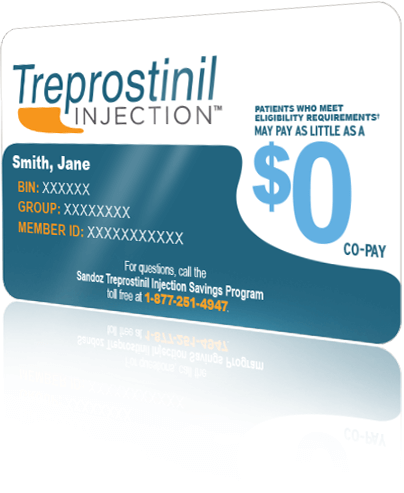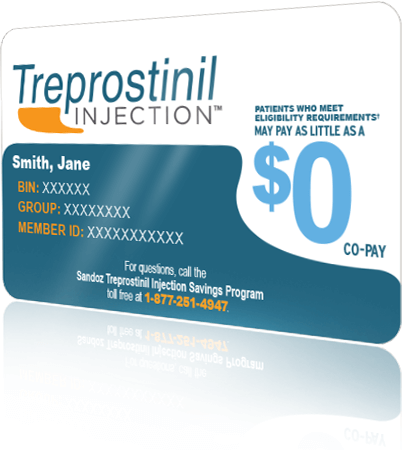Getting Started
Sandoz Treprostinil Injection is provided by a specialty pharmacy (SP) that is staffed by nurses and pharmacists with specific training for pulmonary arterial hypertension (PAH). Your SP has years of experience supporting people with PAH and medicines like Treprostinil Injection.
Your SP can provide
| • | Specialized education from pharmacists and nurses |
| • | Support for understanding options to help address side effects* |
| • | In-home or office visits to help you learn how to use Treprostinil Injection |
| • | Help understanding your insurance and financial assistance options |
| • | Answers to your questions 24/7 |
| * | Contact your healthcare provider for medical advice about managing side effects. |
The SP may call from a phone number that you don’t recognize. Be sure to answer the phone and return phone calls.
Delays can occur if the SP has trouble reaching you.
Financial support for Treprostinil Injection
Treprostinil Injection co-payment assistance may be available for people who qualify.† If you are eligible, you may pay as little as $0 per prescription filled for Treprostinil Injection, with up to $8000 annually in assistance available.
For information about how to receive co-payment assistance, call the Sandoz Treprostinil Injection Savings Program toll-free at 1-877-251-4947 or .
†Sandoz Treprostinil Injection Savings Program Eligibility
The Sandoz Treprostinil Injection Savings Program provides up to $8,000 in annual support for patient cost-sharing for prescriptions filled with Sandoz Treprostinil Injection. For commercially insured patients, you may pay a co-pay as low as $0 out-of-pocket per Treprostinil Injection prescription filled. You pay the first co-pay for your Treprostinil Injection and Sandoz will pay the balance of your cost-sharing up to $8,000 per year. This program is not health insurance. This program is for commercially-insured patients only; uninsured cash-paying patients are not eligible. Patients are not eligible if prescriptions are paid, in whole or in part, by any state or federally funded programs, including but not limited to Medicare (including Part D, even in the coverage gap) or Medicaid, Medigap, VA, DOD, or TriCare, or private indemnity, or HMO insurance plans that reimburse you for the entire cost of your prescription drugs, or where prohibited by law. Card may not be combined with any other rebate, coupon, or offer. Card has no cash value. Sandoz reserves the right to rescind, revoke, or amend this offer without further notice.
Learn more about pulmonary arterial hypertension
The (PHA) is an organization for people who are affected by PAH. You’ll find information about PAH, education, support groups, resources for people with PAH and their families, and more.
The (AHA) is an organization dedicated to fighting heart disease and stroke. The AHA provides information about your heart and lungs and about PAH.


